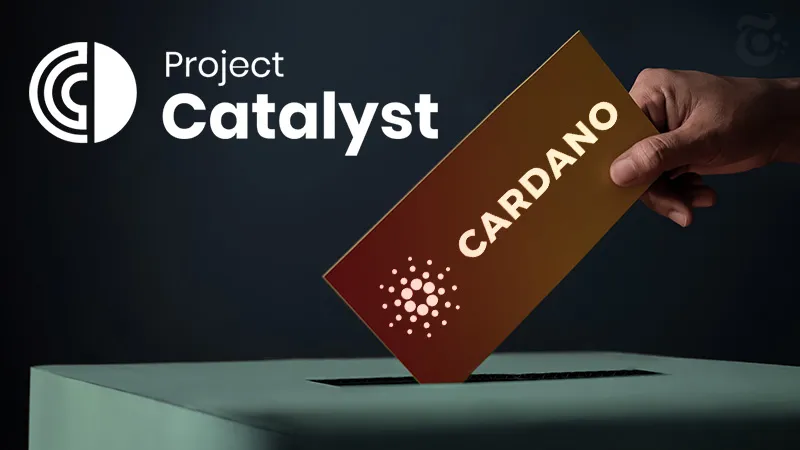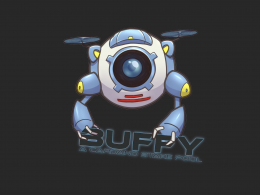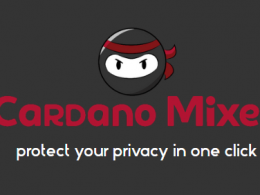Voltaire is Cardano’s Era of Blockchain Governance, and had its first milestone in September 2020 with the launch of FUND 1 of Project Catalyst, an ongoing experiment, which aims for decentralized innovation and collaboration, within a blockchain ecosystem.
Project Catalyst seeks to generate community participation, which through voting, can determine the evolution priorities in Cardano. Funds from the Blockchain Treasury are allocated to the various winning proposals, submitted by developers who address the challenges.
If you want to know how the Cardano Treasury is made up, I leave an article at the end (1).
It could be said that Project Catalyst is like a crowdsourcing project “on steroids”.
Project Catalyst is divided into a series of FUNDs, which roll out approximately every six weeks. FUND 1 was the first test without public participation. In FUND 2 it was the first time that the community presented, debated and voted on proposals. From then on, new financing rounds followed one another until today, with FUND 9.
Until FUND 8, a total of 939 proposals have been awarded for all the accumulated rounds, for a total of USD 25,591,753, allocating In each round, a greater amount of money for development, as you can see in this graph:
In the recently concluded FUND 9, 216 proposals were the winners with USD 12,799,696 in prizes and 10 community challenges selected for FUND 10. Approximately 364,288 total votes cast (none can cast more than one vote), 53% increase from FUND 8.
Lido Nation, a platform with an excellent reputation, and provides interesting information. Below, you can see the accumulated data of the 9 FUNDs:
The Essence
Anyone can submit a proposal describing how they would approach the challenge, and each proposal focuses on challenges proposed by the Project Catalyst team, and voted on by the community.
Proposals go through a community improvement process in which a group of proposal evaluators will check their viability, auditability and impact. Once this process is finished, the proposals are voted on by the community, and the allocated funds will be distributed in ADA to the winning projects.
Proposals compete within their corresponding challenge, with a limit on the amount of funds allocated for that challenge.
The winning proposals are those that can gather a number of positive ADAs, at least 10% higher than the negative ones, and thus position themselves in a ranking to allocate the funds until they are exhausted. In the event that a proposal was well ranked, but its budget exceeds the balance of the challenge, it will not be financed and the next winner will continue.
The voting system is based on the power of each wallet that subscribes for voting in each FUND, with a snapshot of its available funds at a given time, prior to voting. A minimum of 500 ADAs is currently required in the wallet to be able to register it with each FUND. The more ADAs the wallet has registered to vote, the more value the decisions made by its owner have.
Voting is anonymous and each holder who votes can have more than one registered wallet, but of course, it does not make much sense to divide the funds into several wallets, at the end of the day, power is divided that way.
The system allows the proposals to be voted positively or negatively (this is exclusive, since a proposal can only be voted in one way), and there is no limit to the number of proposals voted, without losing voting power in each one. Proposals not voted by that wallet are considered as abstentions, and do not add or subtract votes.
Voting participation rewards wallets according to their voting power. Here you can see the formula for its calculation.
Project Catalyst’s roadmap aims to turn it into a DAO, where not only proposals for particular developments are voted on, but also evolutionary changes to the core development of the blockchain itself. Thus the ownership and governance of the network will be in the hands of the ADA holders. That will be the ultimate level of decentralization, the highest for Cardano.
The Process at Each FUND
IOG chose the Ideascale to manage Catalyst proposals.
The Stages of each Campaign are the following: Submit proposals, Refine, Finalize, Assess, Assess QA, Governance phase.
Each round takes a week or two to share knowledge, and anyone with an idea can submit it to the “incubator” on the platform, when there is nothing at stake, no winners or losers.
If you have an idea and need a team, now is the time, or just present it for others to develop.
By sharing the idea during Insight Sharing you can get comments that will serve as feedback, to refine the idea before the next phase.
Then, for several weeks, proposals are presented in the Submit proposals stage, where each one explains the idea and requests funding. Then the Draft and Refine stages are developed. Lastly, Finalize.
In the Draft stage the idea is in preparation. Comments are still open, and proponents can still receive feedback from the community to help them improve their proposal. It also allows people with similar ideas or complementary skills to join forces as co-authors of a unique proposal.
In the Finalize stage, new proposals are not accepted, but proposers have a few days to polish and edit their drafts.
Then it moves on to the Asses stage, which takes a few weeks and has two parts. First, the “Community Advisors” (CA) evaluate the proposals with a maximum 5-star rating. Then the “Veteran Community Advisors” (VCA) review the work of the assessors and rate the evaluations as “Excellent”, “Good” or “Withdraw”.
The CAs evaluate the proposals in three categories:
- Impact: if it meets and has an impact on the proposed challenge
- Feasibility: checks if the proposing team has a plan, budget, schedule and necessary skills to do the work
- Auditability: evaluates if the results are defined and whether they are measurable
Each of these three categories receives its own rating, along with a written explanation of the raters’ reasoning. These ratings and feedback are invaluable to proponents who may not win funding the first time, but may come back in future funding with stronger proposals based on the feedback they receive.
CAs are paid for the work they do, based on the quantity and quality of their qualifications.
Here you can see Community Advisor Guide.
VCAs rate raters, and look for “checks and balances” to hold CAs accountable for doing a good job. Since CAs are paid for reviews, there is a motivation to do lots, but you can’t do thousands, or even hundreds, of thoughtful, well-reasoned reviews during the brief review window, and so VCAs trap CAs that try to “game the system” with copy/paste or meaningless evaluations. Junk assessments are removed. Reasonable evaluations are rated “Good” or “Excellent.”
VCAs are also paid for their work.
The last stage is voting.
The distribution of funds to the winning proposals is carried out in stages, according to the fulfillment of the roadmap of each one. You can see the official reports of each FUND.
Who Runs Project Catalyst?
Even ideas for decentralized systems must start with some degree of centralization. Input Output Global (IOG), one of the founding entities of Cardano, is currently running Project Catalyst.
The first rounds were centrally defined by IOG. Over the course of each subsequent round, as the different parameters of the experiment are adjusted, it will become more and more decentralized.
Without much information about it, “it is known” that the keys to the Cardano Treasury are distributed among the three companies that carry out the blockchain, IOG, Emurgo and the Cardano Foundation, necessary when distributing the funds among the winning proposals. I could not find official information, but I read that there are 7 keys, of which 3 keys are held by IOG, 2 by the Foundation and 2 by Emurgo. On the other hand, it is commented in the community that the 2 keys of the Foundation were delivered to IOG, a fact that I could not confirm officially either.
Below you can see the Catalyst (IOG) team:
To begin moving other leadership functions to a more decentralized model, the Catalyst Circle. This group is made up of representatives from all the different sectors of the ecosystem: voters, proponents, developers, IOG, the Cardano Foundation, and more. These representatives are elected by their constituent group and serve for a short term. They meet to bring various points of view and look for solutions and identify which parameters of the experiment need to be adjusted.
Project Criticisms
Project Catalyst is about governance, and as such, discussion and debate abounds on how to address the issues of blockchain, and its developments and incentives to evolve it.
That is natural, and also desirable. The community must be involved to promote decentralization, which requires a number of participants. Without criticism it is impossible to evolve in the right direction. The more discussion, the more ideas emerge.
There are discussions about which is the best democratic system, about whether the votes should be unique per person or, as it is the current one, votes qualified by ADA funds, that is, by “skin in the game”.
Other debates are presented, such as the lack of transparency in the distribution of funds to developers who won with their proposals, or the improvement in the evaluation of proposals by CAs and VCAs.
I will quote some reviews from members of the community to make it clear what I mean, classifying them by subject matter.
- The financing:
- The participation in the voting of the Cardano Foundation:
- The format of governance, audit and the challenges that have a certain political focus:

Daniel Ribar, member of the Catalyst team said:
One of the winning proposals of FUND 9 was “Daedalus Turbo“, it obtained a financing of USD 759,000, for which it proposed to make the Daedalus wallet (node) 10 times faster, arousing controversy among voters. He got the vote of 2000 unique wallets, fourth place. Let’s see some comments:
Even Charles Hoskinson, CEO of IOG, has commented on this winning proposal, in a moderate and conciliatory tone.
- As of this FUND 9, IOG has presented certain requirements for the distribution of funds:
Final Words
All developments can be improved, and Project Catalyst is no exception.
From decentralization, to the voting system, through Advisor evaluations, to auditing to distribute funds, Catalyst can, and should, be improved to provide the transparency that the management of public money deserves, which is obtained in each epoch of 20% of the monetary emission and of the rewards.
The scientific rigor that characterizes IOG for the development of the Cardano blockchain must be used in Catalyst, and the community cannot be left out, participating in the debate for the construction of the best governance system in Cardano.










